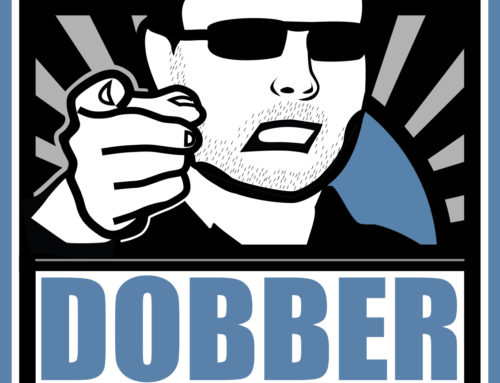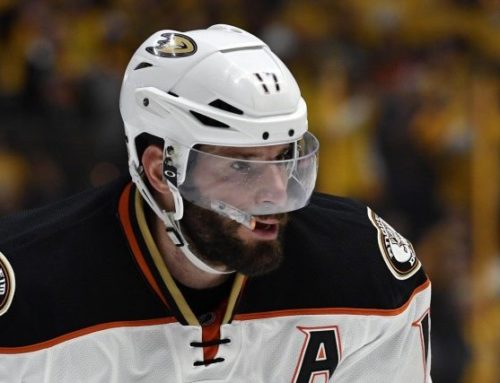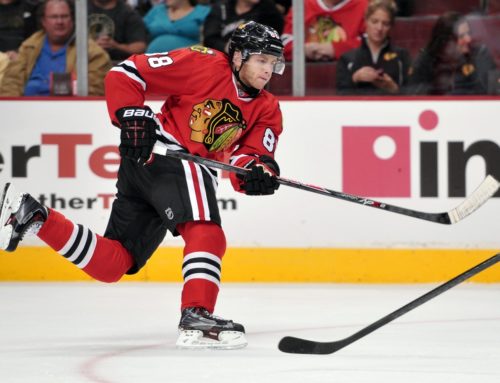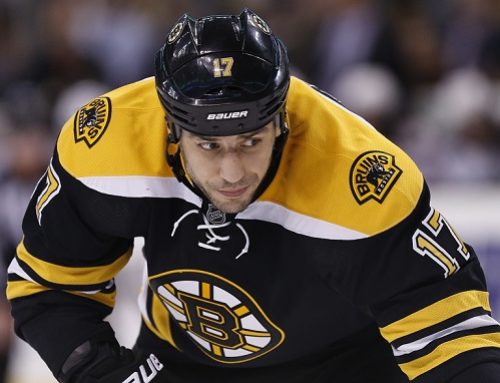
Selling high is a great theory, but how can you apply it to your hockey pool?
Selling high and buying low is an incredibly successful strategy in any business. And it is no different in fantasy hockey. At the end of the day, it is all about numbers and statistics, and shrewd poolies should always be looking for ways to maximize the return on assets they own, as well as to pick up undervalued assets on the cheap.
But selling high isn't easy. If it was, there wouldn't be such a thing as selling high. It would simply be trading an asset for an equal asset. The market would take care of any inefficiency. But we grow attached to players. We watch them develop as prospects. We may think their upside is higher than what they have currently shown. And after a breakout year, why would we expect a certain player to regress in terms of production? Projecting a decline in production for a player is difficult to do without any concrete reasons or data behind it. Thankfully we have some terrific resources to help along the way (Behind the Net, Hockey Reference, Hockey Analysis, Hockey Abstract, and so on).
There are a few factors to pay close attention to. Sometimes you can get burned on moving an asset you feel may be overvalued (like I did with Steven Stamkos a few years ago…). But in the long run, it is a sound strategy to use historical data and statistics to figure out which players are more likely to regress.
Today we are going to take a look at a few players you may be smart to "sell high" on this summer.
Patrik Berglund
Why?
The hulking pivot (6-4, 220 pounds) finally showed signs of reaching his potential last season with 17 goals in 48 games – by far his best per-game offensive production in the NHL. After recording 47 points as a rookie in 2008-09, Berglund has been teasing poolies with his size/skill package. However, he has broken the 50-point mark only once in five seasons since then.
Berglund did have 17 goals last season, but on only 74 shots on goal. I'm not a psychic, but repeating a near-30% scoring rate is going to be pretty much impossible.
I'm not a fan of drafting St. Louis forwards (with a few exceptions). There is so much depth up front and the team plays such a strong defensive game – it makes it hard for one or two forwards to stand out. Berglund broke out last year, but unless he starts shooting the puck a lot more this season, it may be the time to cash in on his break out and future upside/potential.
Why Not?
There aren't many players that combine size and skill as well as Berglund, and that is what would make selling high on him so difficult. And he recently signed a one-year contract, so you know he has a lot of motivation to prove to the Blues that he is worth big bucks over the long term.
Jiri Tlusty
Why?
A breakout performance on Carolina's top line – why would it make sense to move Tlusty now? Let's see – 23 goals on 117 shots (19.7% scoring rate). And Tlusty does have two very talented linemates in Alex Semin and Eric Staal, but as a trio they ranked 9th, 14th, and 23rd in on-ice shooting percentage last year (the scoring percentage of ALL teammates on the ice). This number is a lot more arbitrary or lucky than a player's individual shooting percentage.
Essentially, everything Tlusty shot went in the net, and the same held true for his teammates whenever he was on the ice. Semin and Staal both have great shots and that matters, and Tlusty is a really solid playmaker, too. But as a line they will be in tough to repeat their dominant offensive performance in 2013-14 (especially in a tougher division/conference).
Why Not?
Of Tlusty's 23 goals, only four of them came on the power play. He produced a lot at even strength, and that is often a good indicator of a player's true offensive upside (power play ice time fluctuates a lot more than even strength ice time).
Pascal Dupuis and Chris Kunitz 
Why?
Dupuis and Kunitz both scored a ton of goals in 2013. And they proved they can be productive players without Crosby (particularly Dupuis).
Kunitz scored 22 goals on 113 shots last year – a 19.5% scoring rate. His career number – 12.8%.
Dupuis scored 20 goals on 140 shots (14.3%). His career number – 10.0%.
Kunitz is likely to regress more than Dupuis looking at this number alone, and there is another reason why he may be the winger to sell high on – of his 20 goals last year, Dupuis scored only twice on the power play.
Crosby, Dupuis, and Kunitz were third, sixth, and seventh in the entire NHL in on-ice shooting % last season. Crosby will generally be near the top, but it is unlikely that he will be able to bring his linemates along for the ride every single season.
Why Not?
This Crosby guy, you may have heard of him….
There are a lot of ways to figure out sell-high candidates. Shooting percentages are very important – find players either well below or well above their career mark(s). On-ice shooting numbers (including teammates) are also really important, too. How players are utilized matters a lot, too. Playing tough minutes against top players usually makes it harder to score.
Look at players who scored a lot of their goals on the power play. Some players will always feast on the man advantage – Tavares, Stamkos, and so on. But some players see their power play ice time cut or taken away pretty quickly.
***
The 2013-14 DobberHockey Fantasy Guide will be released on August 1st. 
The beauty of an online (PDF) release, and what separates us from the competition, is that we are able to update the DobberHockey Guide throughout the rest of the summer and right up to puck drop in early October. Other guides released in magazine format have to be written and submitted for publishing in late June with quick updates on free agency in early July.
As we all know, a lot can still happen in August and September. How about a strong training camp from a bubble player or a rookie? How about a late summer trade or signing? The fantasy impact(s) of these moves can be significant, and we will have you covered.
What the Fantasy Guide contains:
Team-by-team projections, line combinations (even strength and power play), and comprehensive analysis from Dobber.
A look at advanced stats and how they can help you become a better poolie.
A free and fully customizable spreadsheet to get you armed and ready for draft day.
Contributions from the DobberHockey crew, including Angus, Laidlaw, and Amato.
Sleepers, buy low and sell high targets, salary cap bargains, goaltenders galore, draft strategies, projected hits, and much, much more.
Pick up the 2013-14 Fantasy Guide here.
Support the website and win your pool. I'd call that a win-win.





 FLA
FLA CHI
CHI NYR
NYR PIT
PIT L.A
L.A COL
COL MTL
MTL N.J
N.J CBJ
CBJ BOS
BOS DET
DET ANA
ANA
